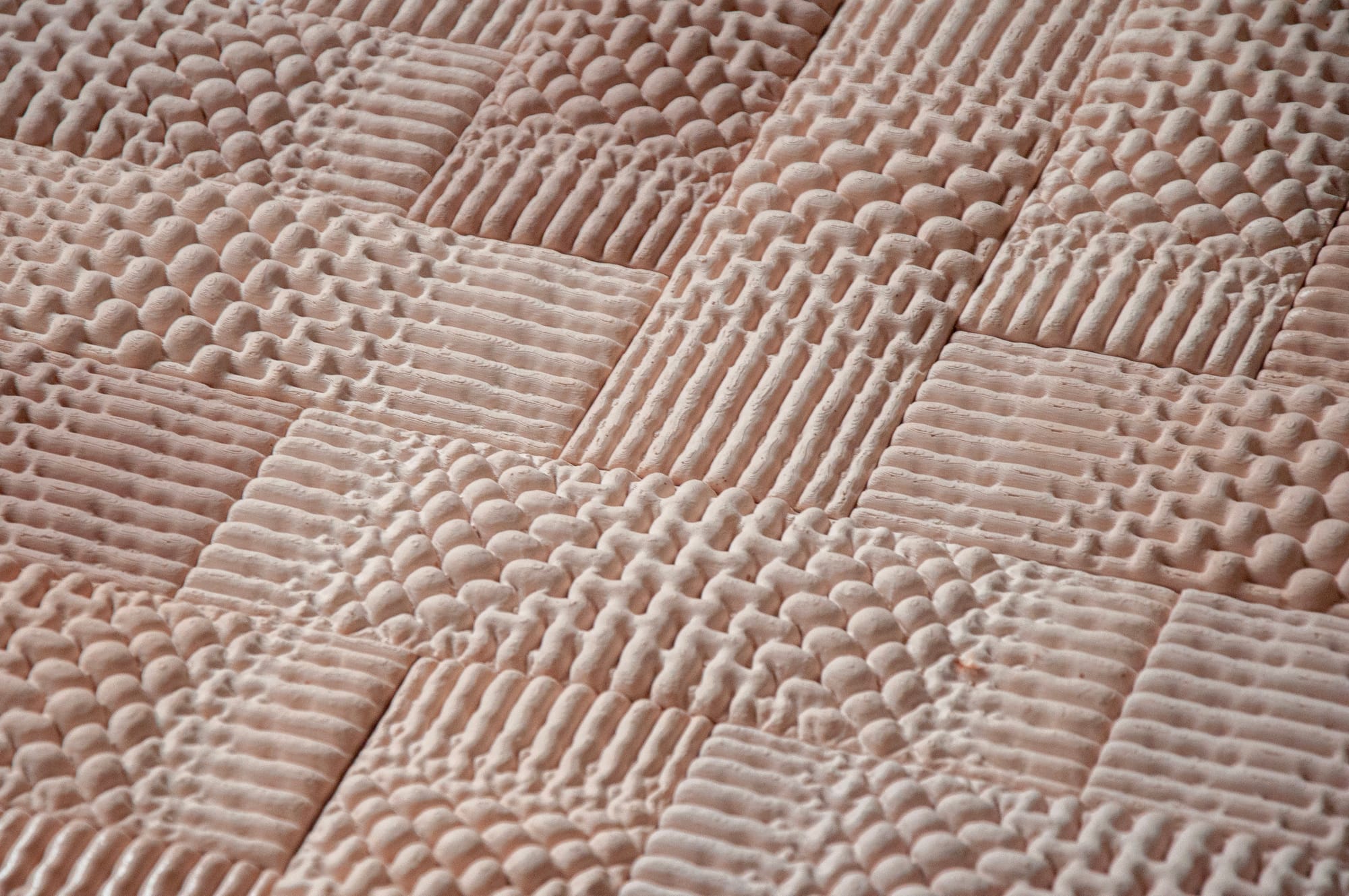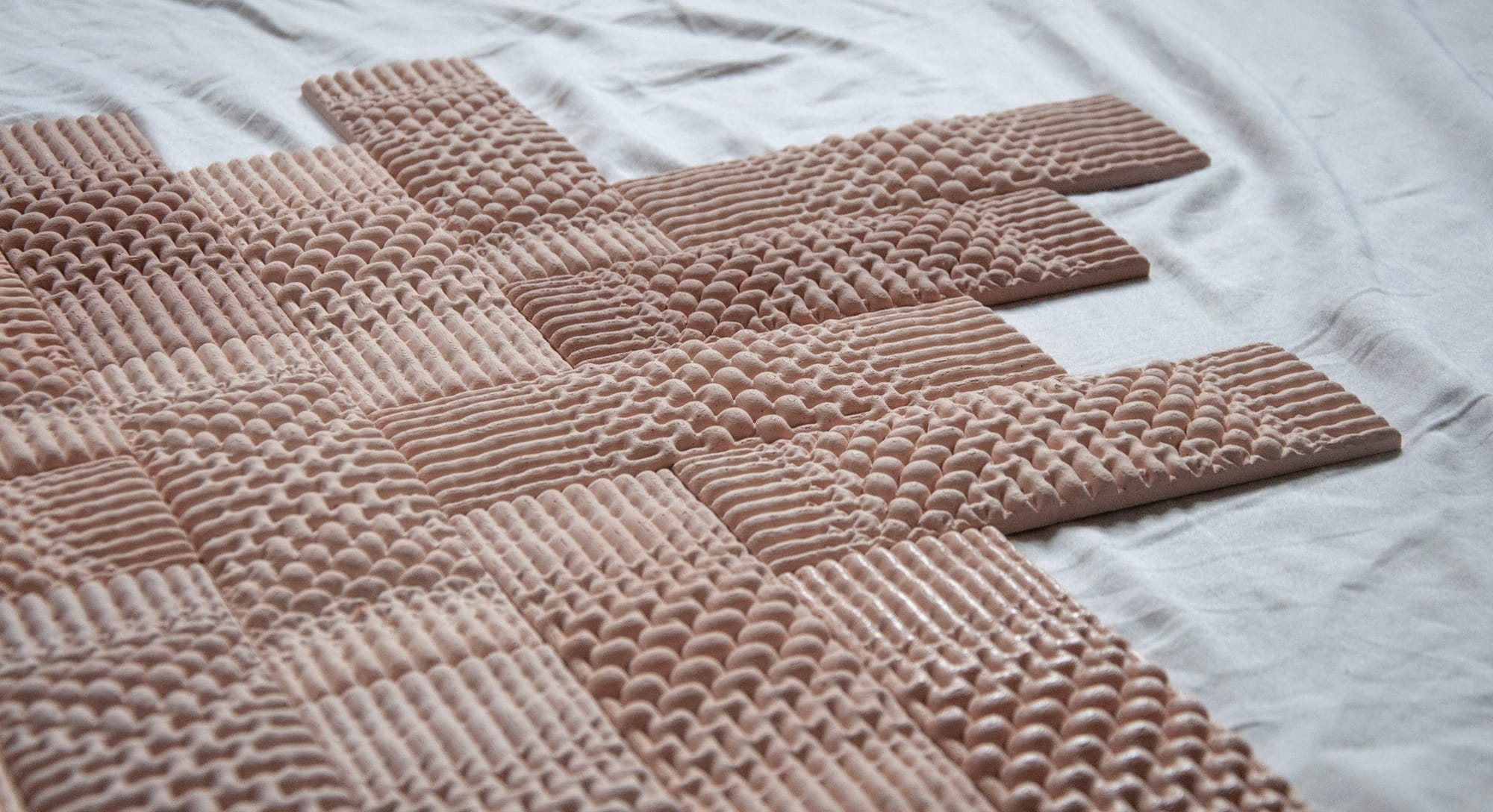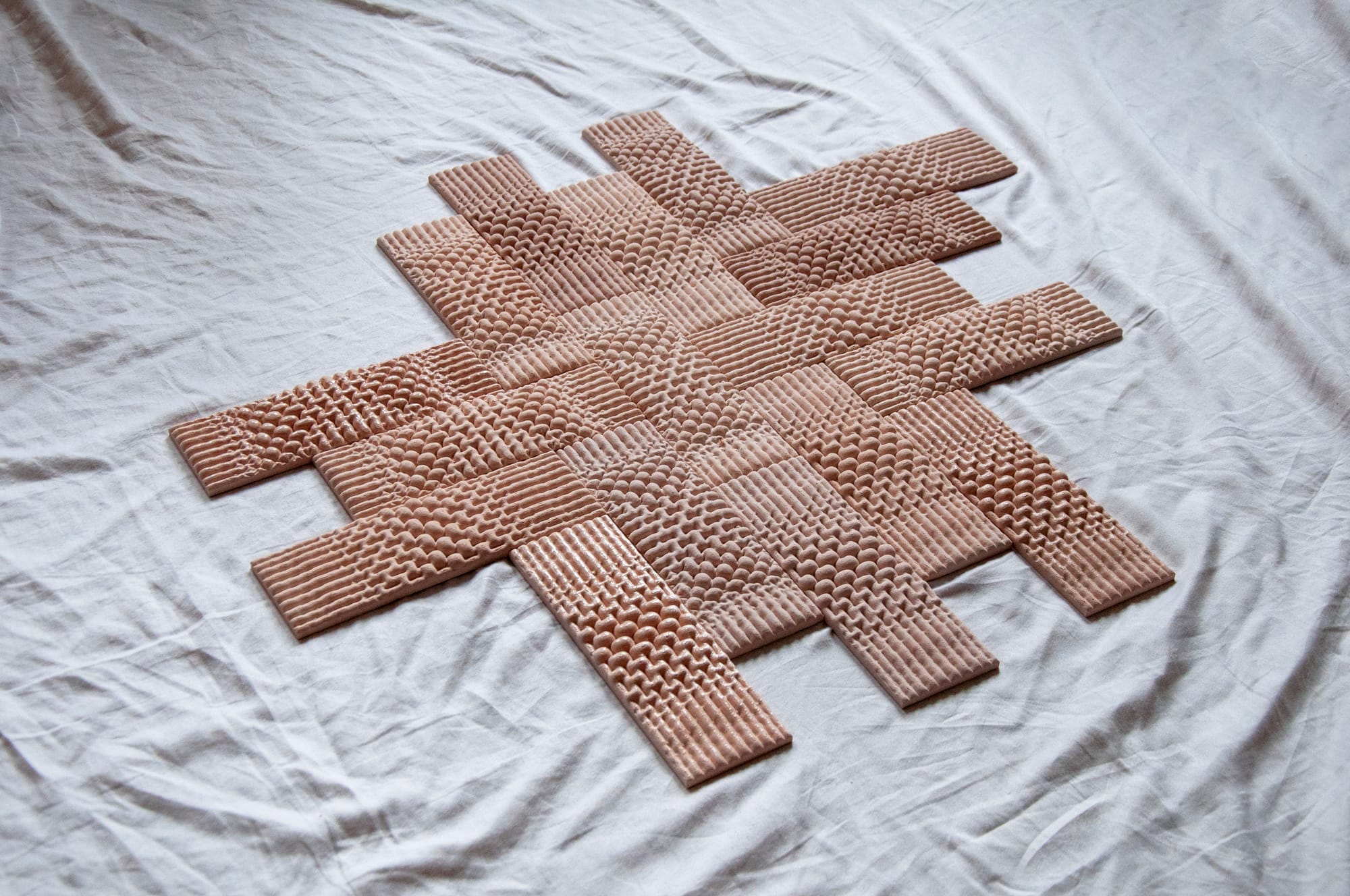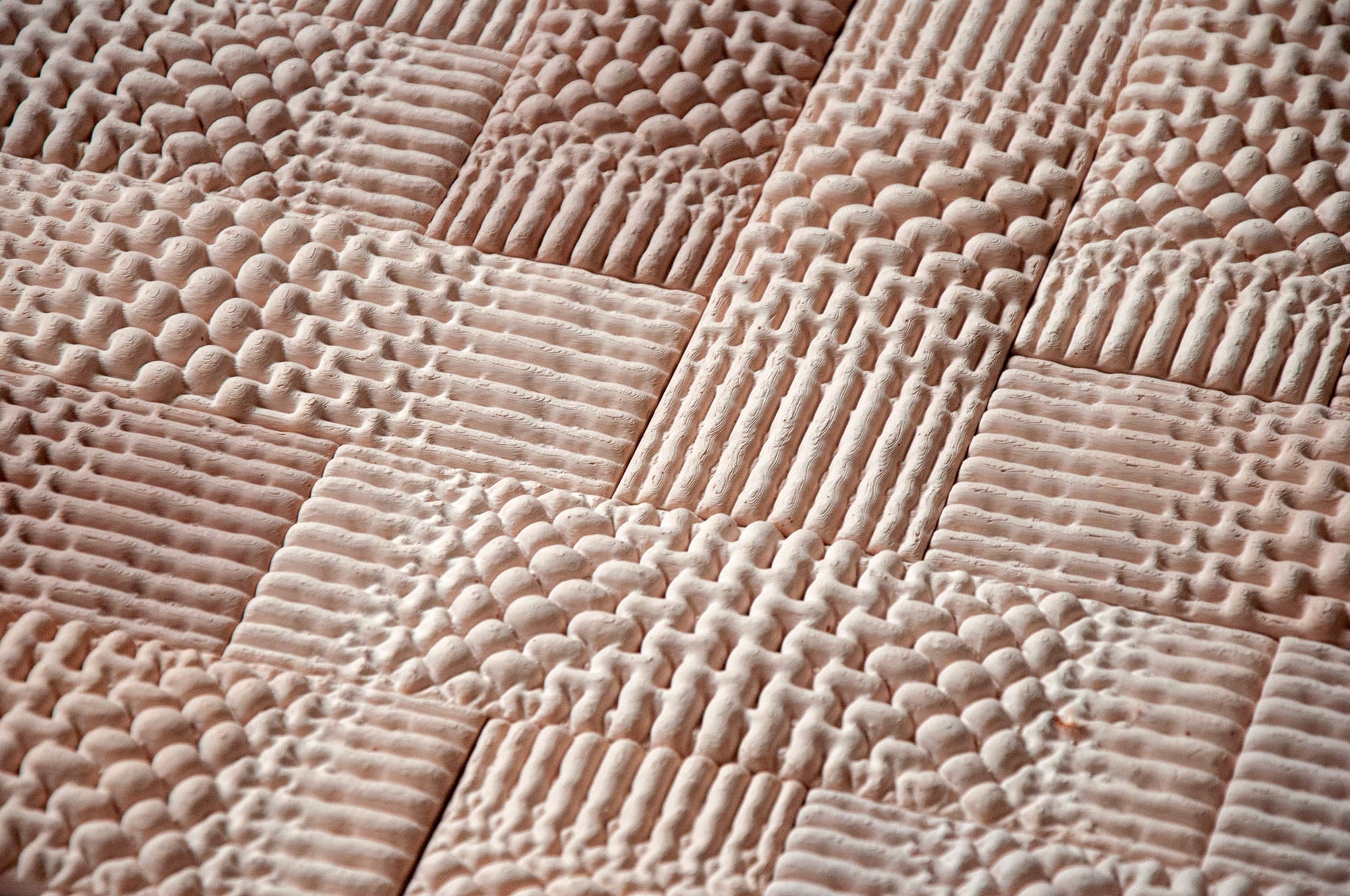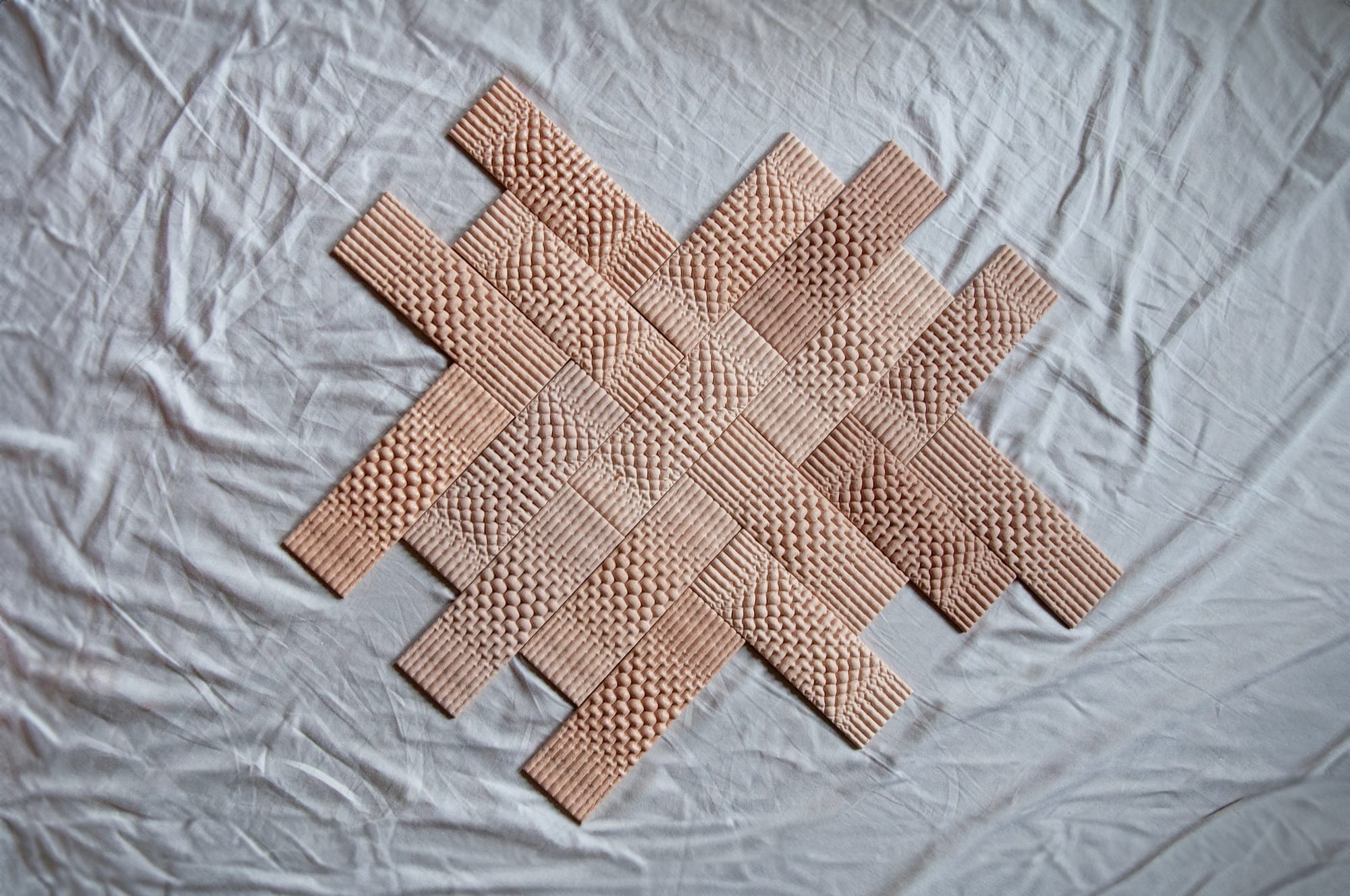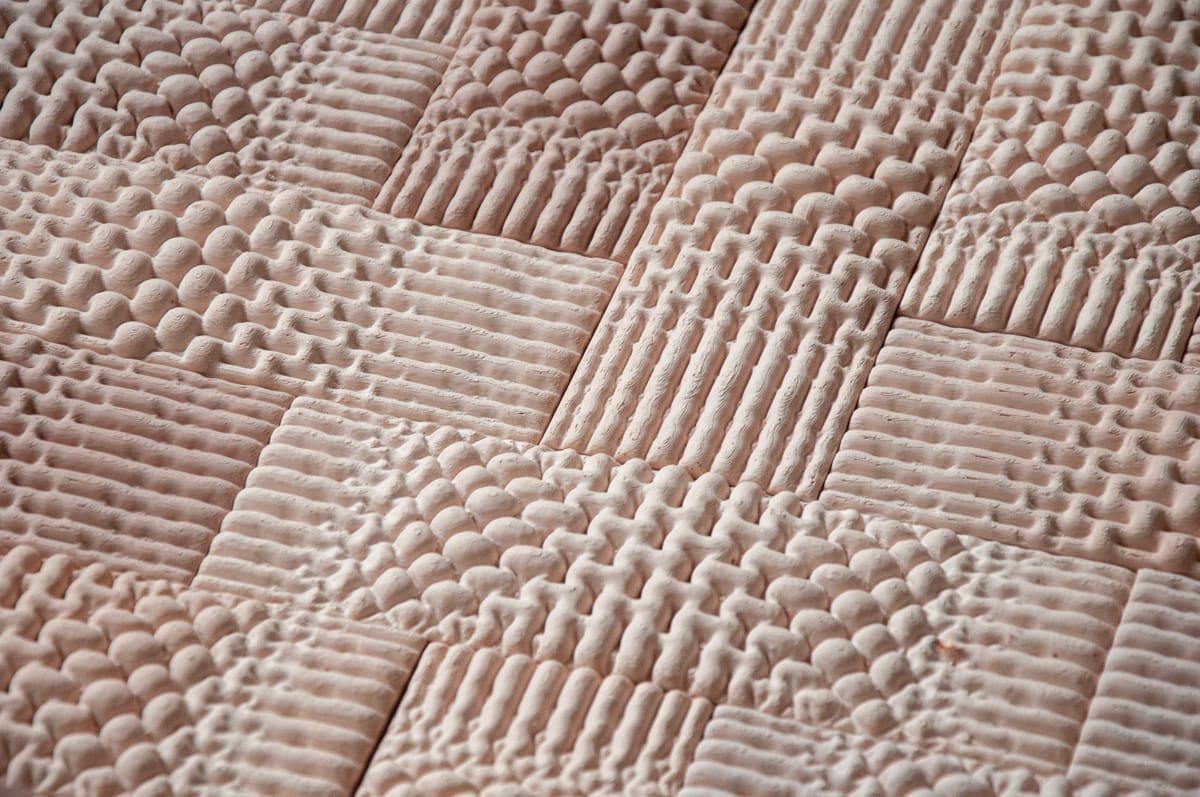
Smock Tile is a study in how stitch-based logics can be translated into geometric systems and cast surface modules. The project draws on smocking, a textile technique in which fabric is clipped, gathered, and stitched to generate relief patterns. This principle was reinterpreted computationally to explore how stitching motifs can guide deformation once inflation is applied to a constrained mesh.
A parametric workflow was developed to encode stitch patterns as arrays of constraints. These were mapped onto inflatable digital meshes, where pressurization produced folds, ruffles, and localized compressions. The resulting geometries record the relationship between stitch density, clipping logic, and inflation pressure, yielding a catalog of repeatable yet variable forms.
Each configuration was prepared for fabrication by 3D printing positives, from which silicone molds were produced. Final tiles were cast in pigmented resincrete, capturing the smocked deformations in rigid material. The outcome is a modular tiling system in which surface articulation is directly derived from stitch logic and inflation behavior, translating a textile operation into an architectural component.
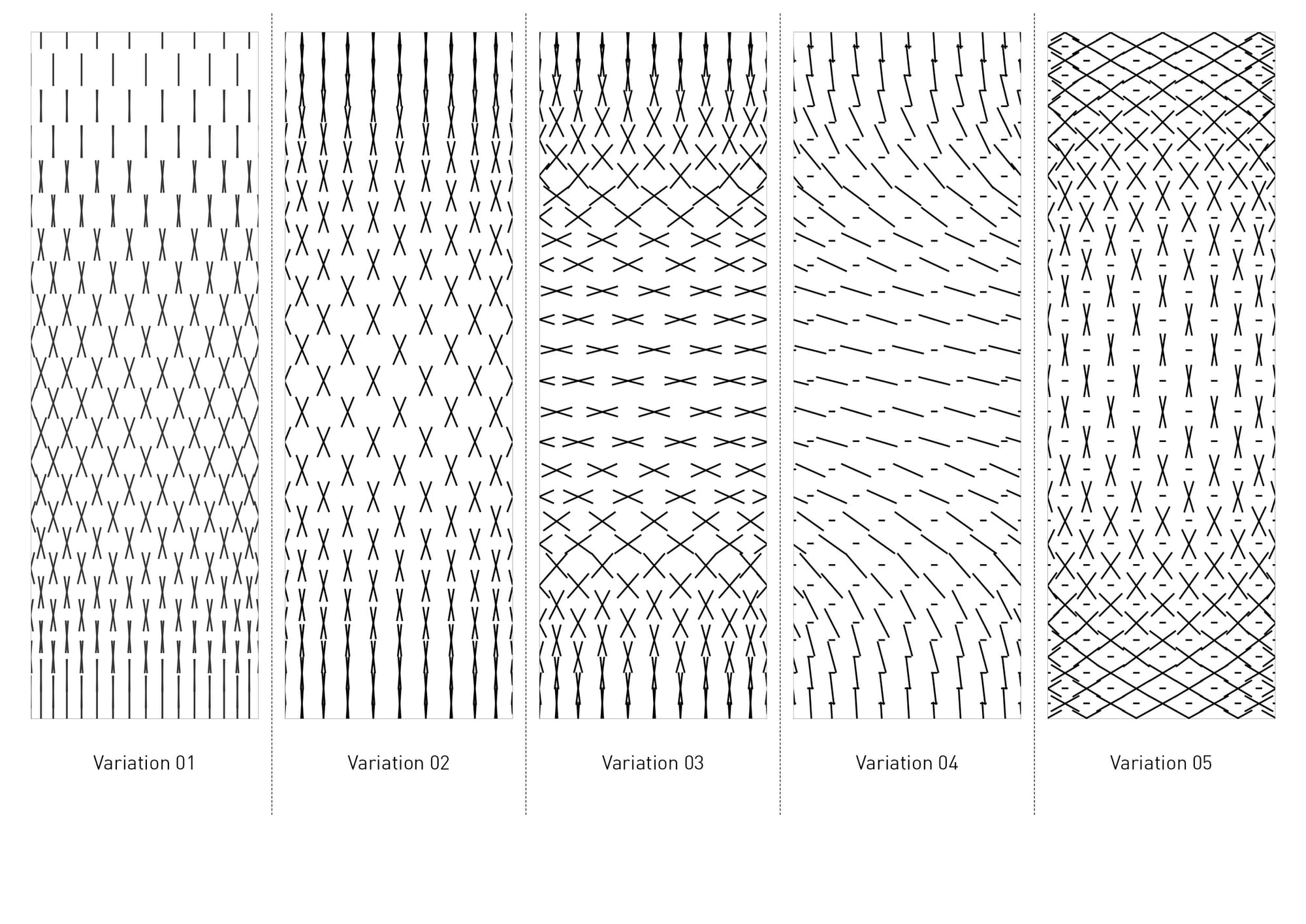
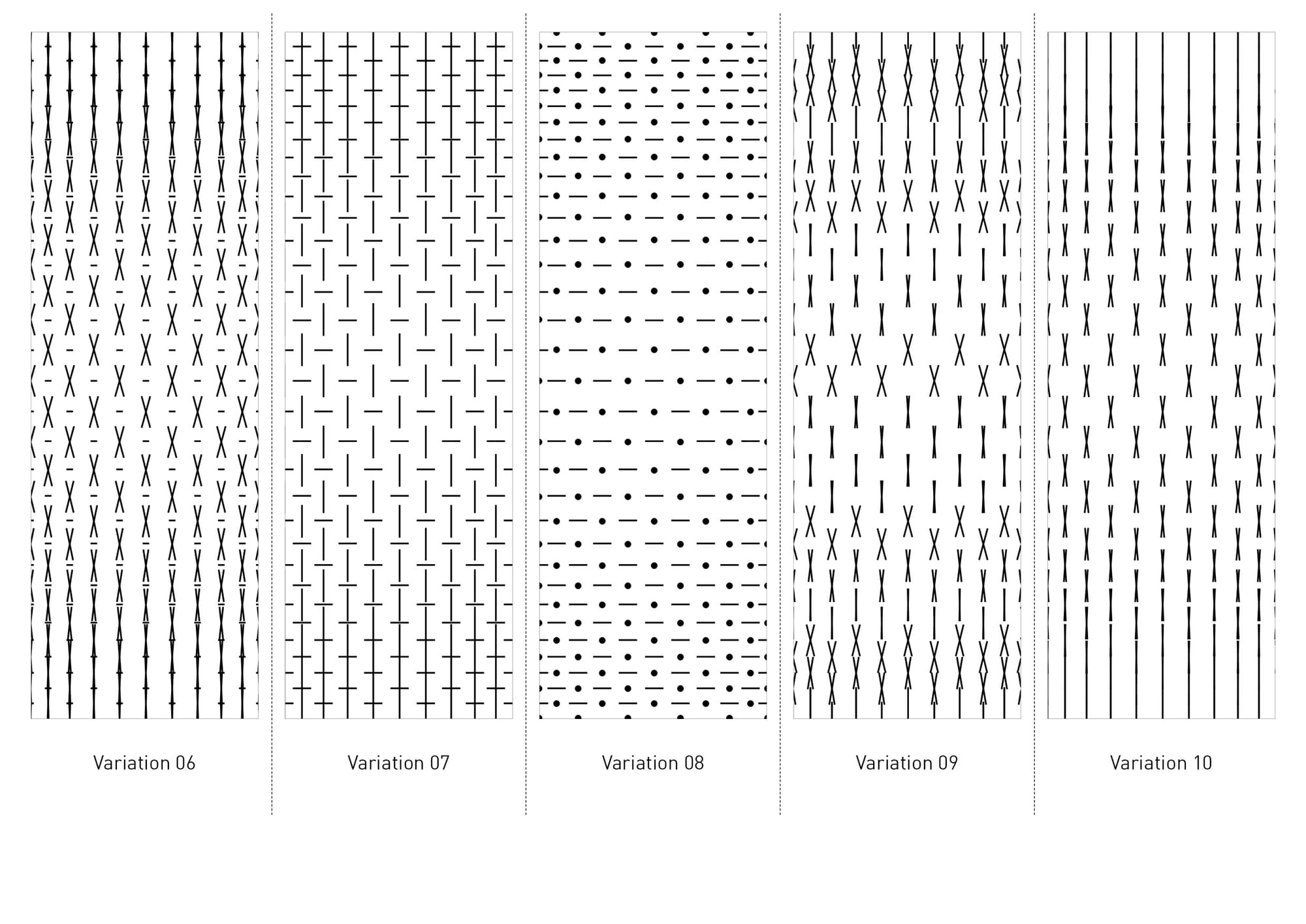
Parametric Stitching Patterns, diagram inputs for simulation.
Inflation Sequence 1
Inflation Sequence 2
